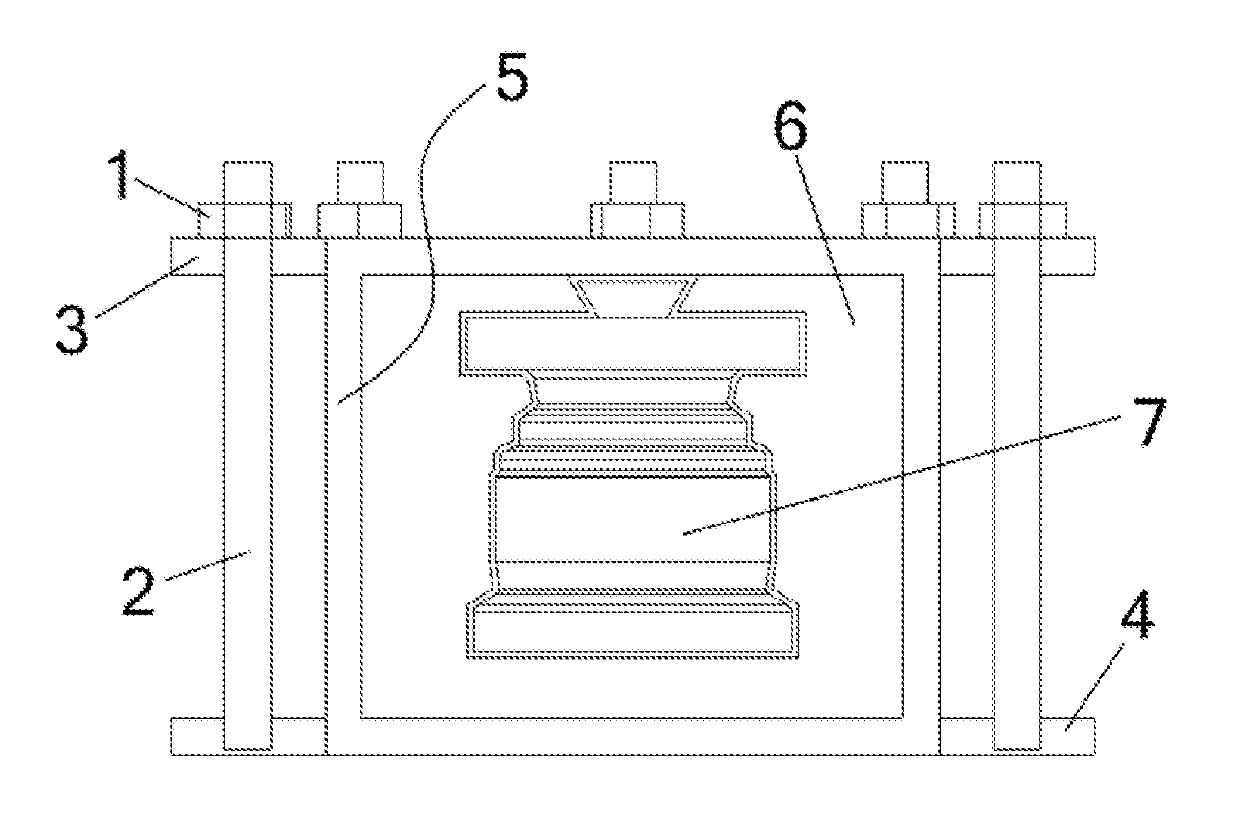System and method for moulding metal parts
a metal part and system technology, applied in the field of system and method for moulding metal parts, can solve the problems of large economic cost, limited design versatility, and large internal defects of sand moulding, and achieve the effects of low internal defect level, reduced cost, and highly versatile parts
- Summary
- Abstract
- Description
- Claims
- Application Information
AI Technical Summary
Benefits of technology
Problems solved by technology
Method used
Image
Examples
Embodiment Construction
[0017]The attached drawings show a preferred embodiment of the invention. More specifically, it comprises a first metal structure or base (4) which is integrally attached to a rotating machine, said machine rotating the assembly at a high speed, and where said structure (4) is associated with a cover (3) and with a plurality of fastening nuts (1) and bolts (2), and where, in turn, the structure is integrally attached to a cylindrical metal die (5) containing a ceramic mould (7) and hardened sand (6) for filling the die (5).
[0018]The method of moulding ceramic parts includes:
[0019]i) In a first step, producing a polystyrene model of the part to be produced; said model can be produced by injecting polystyrene onto an aluminium mould in the event of mass production of parts, or by means of machining a polystyrene block from a polystyrene block for producing unitary parts.
ii) In a second step, introducing the polystyrene model in a liquid ceramic “Milled Zircon®” (zirconium sand) and “P...
PUM
| Property | Measurement | Unit |
|---|---|---|
| thickness | aaaaa | aaaaa |
| thickness | aaaaa | aaaaa |
| temperature | aaaaa | aaaaa |
Abstract
Description
Claims
Application Information
 Login to View More
Login to View More - R&D
- Intellectual Property
- Life Sciences
- Materials
- Tech Scout
- Unparalleled Data Quality
- Higher Quality Content
- 60% Fewer Hallucinations
Browse by: Latest US Patents, China's latest patents, Technical Efficacy Thesaurus, Application Domain, Technology Topic, Popular Technical Reports.
© 2025 PatSnap. All rights reserved.Legal|Privacy policy|Modern Slavery Act Transparency Statement|Sitemap|About US| Contact US: help@patsnap.com

